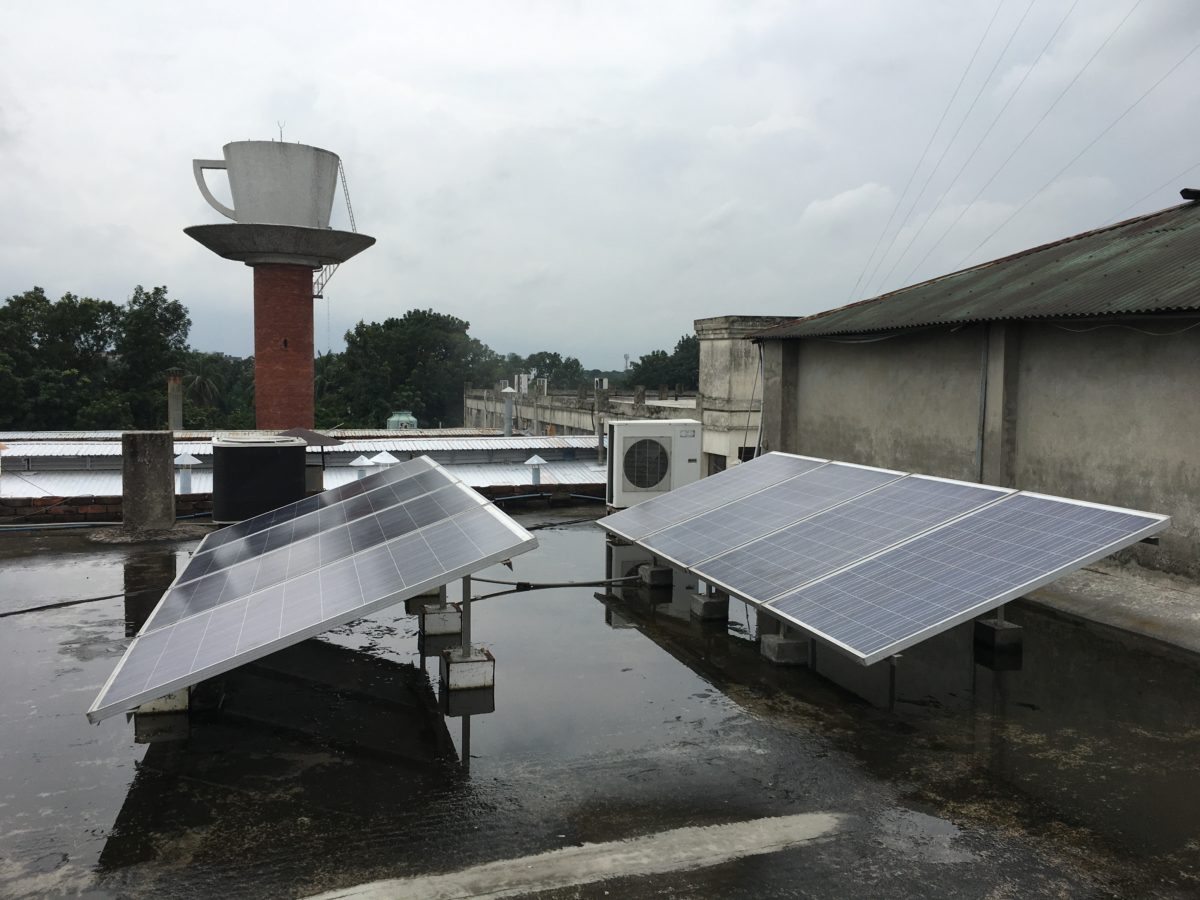Research by TFE Consulting, a Germany-based advisory firm focusing on energy, digitization, mobility and buildings, suggests developers would be missing an emerging opportunity by dismissing the Bangladesh solar market.
“The [Bangladeshi] market is at a point where the Indian market was about 3-4 years ago, but with a better economic case and (we believe) a faster ramp-up,” says Tobias Engelmeier, MD of TFE Consulting, in a recent LinkedIn article. With a projected market potential in the GW-range over the next five years, Bangladesh could be a significant growth market for C&I solar.
Currently, only a few MW have been installed on a handful of government buildings, yet analysis by TFE shows the market has strong economic fundamentals. Their estimates for the levelized cost of electricity (LCOE) of rooftop solar, around BDT 9.5/kWh, is in the range of the LCOE for commercial grid power and diesel back-up, between BDT 9-12/kWh.
The early adopters in the C&I market are large, exporting manufacturers. These manufacturers are motived by the price stability, reliability, and green credentials that solar provides. According to Mohit Anand, director of consulting at TFE, manufacturers only receive 30-40% of their electricity from the grid, with diesel backup making up the difference. Solar offers a buffer to oil price rises and reduces the need to continually procure diesel. Not to be underestimated is the marketing appeal solar can offer exporters to environmentally-minded international buyers.
Large manufacturers are well-suited to self-consumption as their load exceeds their available rooftop potential. “Bangladesh is unique in that there are many large players that run their operations 24/7-365. In the highly competitive manufacturing industry, there is no conception of weekends, and plants only shut down a few days in the year around major holidays,” says Anand. By TFE estimates, self-consumption will be the main model for around 40-60% of commercial customers.
In an unusual turn of events, the well-developed off-grid solar home system market may seed the rooftop C&I market. Many large manufacturing companies started producing solar home systems to serve the off-grid market in Bangladesh. Now, those companies are eyeing the C&I rooftop market as a next step in developing their solar businesses.
Another unexpected aspect to Bangladesh’s solar market, Anand tells pv magazine, is that the “lack of formal policies governing solar has proved a hidden blessing for the market as there is no policy or regulation to hinder rooftop solar development.” Under current regulations, there is no restriction on setting up on-site captive consumption up to 5 MW. Developers only need to register the system with utilities.
A drafted net metering policy has helped as an anchor point for discussions of alternative support policies. Anand believes that ultimately net metering won’t be put in place, but instead, the government will use a power evacuation compensation scheme where the manufacturers could sell electricity back to the grid at a price below retail grid prices.
The rise of C&I rooftop solar could present a problem for the state-run utilities as commercial customers are utilities’s most profitable customers and rooftop solar could reduce the sale of electricity to these customers. However, Anand believes utilities won’t stymie solar development. In his view, “The utilities in Bangladesh are owned by the government, and if the utilities try to limit solar adoption, they will be overruled by the government. The government wants to promote jobs and economic growth, and solar will help fuel Bangladesh’s overall economic development.”
Written by Dustin Zubke
This content is protected by copyright and may not be reused. If you want to cooperate with us and would like to reuse some of our content, please contact: editors@pv-magazine.com.



1 comment
By submitting this form you agree to pv magazine using your data for the purposes of publishing your comment.
Your personal data will only be disclosed or otherwise transmitted to third parties for the purposes of spam filtering or if this is necessary for technical maintenance of the website. Any other transfer to third parties will not take place unless this is justified on the basis of applicable data protection regulations or if pv magazine is legally obliged to do so.
You may revoke this consent at any time with effect for the future, in which case your personal data will be deleted immediately. Otherwise, your data will be deleted if pv magazine has processed your request or the purpose of data storage is fulfilled.
Further information on data privacy can be found in our Data Protection Policy.